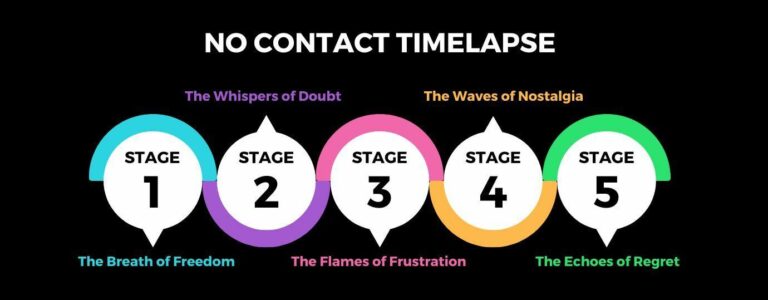When it comes to dealing with difficult people, especially those who drain your energy or cause drama, two popular strategies often come up: No Contact and Gray Rock. But what do these terms really mean, and how do you know which one to use? In this article, we’ll break down the key differences between No Contact and Gray Rock in a simple, straightforward way. Whether you’re dealing with a toxic ex, a challenging coworker, or a family member who pushes your buttons, understanding these approaches can help you protect your peace and take control of your interactions. Let’s dive in!
Table of Contents
- Understanding No Contact and Gray Rock as Distinct Strategies
- When to Use No Contact for Healing and Boundary Setting
- How Gray Rock Helps Defuse Toxic Interactions
- Choosing the Right Approach for Your Emotional Wellbeing
- In Retrospect
Understanding No Contact and Gray Rock as Distinct Strategies
Both No Contact and Gray Rock are popular methods for managing difficult relationships, yet they serve very different purposes and require distinct approaches. No Contact is an absolute boundary—a firm decision to cut off all communication and interaction, often used to protect oneself from emotional harm or manipulation. It’s a clear message that there’s no engagement, allowing the person practicing it to heal and regain control over their emotional well-being. This strategy is especially useful in toxic or abusive situations where ongoing contact would cause further damage.
On the other hand, Gray Rock is a subtler, more tactical approach. Instead of ending communication altogether, it encourages making yourself uninteresting and emotionally unavailable to discourage further interactions or manipulations. Imagine becoming as dull and unresponsive as a gray rock—offering no emotional reactions, no drama, and minimal personal information. Key aspects of this method include:
- Giving short, neutral responses
- Avoiding eye contact or emotional expressions
- Not engaging in debates or arguments
- Keeping personal details private
While No Contact creates a firm boundary by removing yourself entirely, Gray Rock lets you stay physically present but emotionally invisible, effectively deterring unwanted attention or provocations.
When to Use No Contact for Healing and Boundary Setting
There are moments in life when stepping away entirely is the healthiest choice you can make. Whether you’ve experienced emotional exhaustion, toxic behaviors, or just need space to rediscover yourself, putting a complete stop on communication offers a powerful reset. This approach isn’t about punishment—it’s about prioritizing *your* well-being. Use this time to reflect, heal, and regain clarity, without external noise influencing your emotions. It acts as a protective buffer, giving you the mental breathing room necessary to rebuild strength and confidence.
Consider using no contact when setting firm boundaries that must not be crossed. For example, if someone consistently disrespects your limits or triggers repeated emotional turmoil, clear and unwavering distance sends a strong message: your peace of mind is non-negotiable. It’s a way to reclaim control without engaging in draining conflicts. Here are a few situations where no contact can be especially beneficial:
- After a painful breakup or betrayal where communication only revives hurt.
- During personal growth phases when outside influences might derail your progress.
- When dealing with manipulative or abusive behavior that jeopardizes your mental health.
- To reinforce boundaries that have been repeatedly ignored despite prior warnings.
How Gray Rock Helps Defuse Toxic Interactions
When dealing with toxic individuals, gray rock is a subtle yet powerful technique that helps you maintain your emotional safety without escalating the situation. By adopting a completely neutral and unengaging demeanor, you essentially become uninteresting to manipulators or narcissists. This approach works wonders because it minimizes the fuel toxic personalities crave—your reactions, emotions, and attention. Instead of confrontation or withdrawal, gray rock is about blending into the background, making interactions as dull and uneventful as possible.
Some key strategies to implement this method effectively include:
- Keeping your answers brief and factual without sharing personal details or emotions.
- Avoiding eye contact or overly enthusiastic body language that might provoke engagement.
- Resisting the urge to defend or argue, as this often feeds the toxic person’s agenda.
- Maintaining a calm and indifferent tone regardless of provocations.
These small adjustments can dramatically reduce the emotional charge in every interaction, essentially deflating potential drama before it begins. Gray rock doesn’t require cutting the person out of your life but gives you a protective shield that allows you to preserve your peace in unavoidable situations.
Choosing the Right Approach for Your Emotional Wellbeing
When it comes to protecting your emotional wellbeing, choosing the right way to set boundaries is essential. If you find yourself entangled in a draining or toxic relationship, both No Contact and the Gray Rock methods offer powerful strategies—but they serve different purposes. No Contact means creating a complete break, giving you the space to heal without interference, which can be especially effective if the connection is damaging your mental health. On the other hand, Gray Rock involves remaining present but unengaged, becoming as uninteresting as possible to discourage further emotional manipulation. Understanding which approach aligns with your personal needs can help you regain control without feeling overwhelmed.
Consider these key factors when deciding between them:
- Intensity of the relationship: If the situation is high conflict or abusive, No Contact often provides the safest distance.
- Your emotional readiness: Gray Rock allows you to stay involved subtly while protecting yourself, useful if complete disconnection isn’t feasible.
- Long-term goals: Are you aiming for permanent separation or managing ongoing interaction? This shapes how you set boundaries.
- Support system: Having friends, family, or a counselor makes No Contact easier to maintain.
Reflect honestly on where you are emotionally. Choosing the right route isn’t about weakness or avoidance—it’s about empowering yourself to foster peace and confidence in your emotional space.
In Retrospect
Thanks for sticking with me through the key differences between No Contact and the Gray Rock method! Both strategies can be powerful tools depending on your situation, whether you’re seeking space and healing or just trying to minimize drama and maintain your peace. Remember, the best approach is the one that feels right for you and supports your well-being. Hopefully, now you feel a bit more equipped to choose your path with confidence. Stay kind to yourself, and take care out there!

